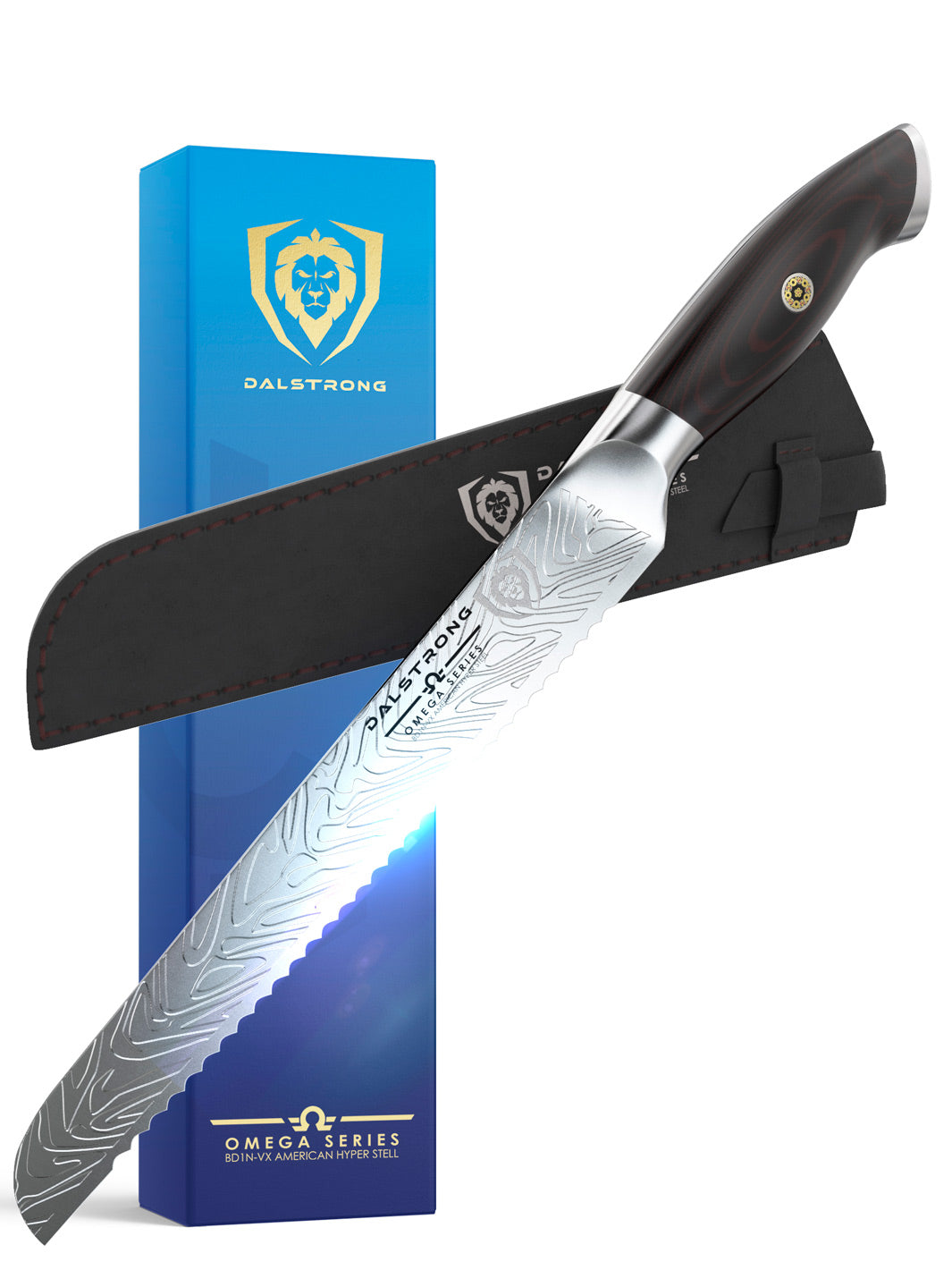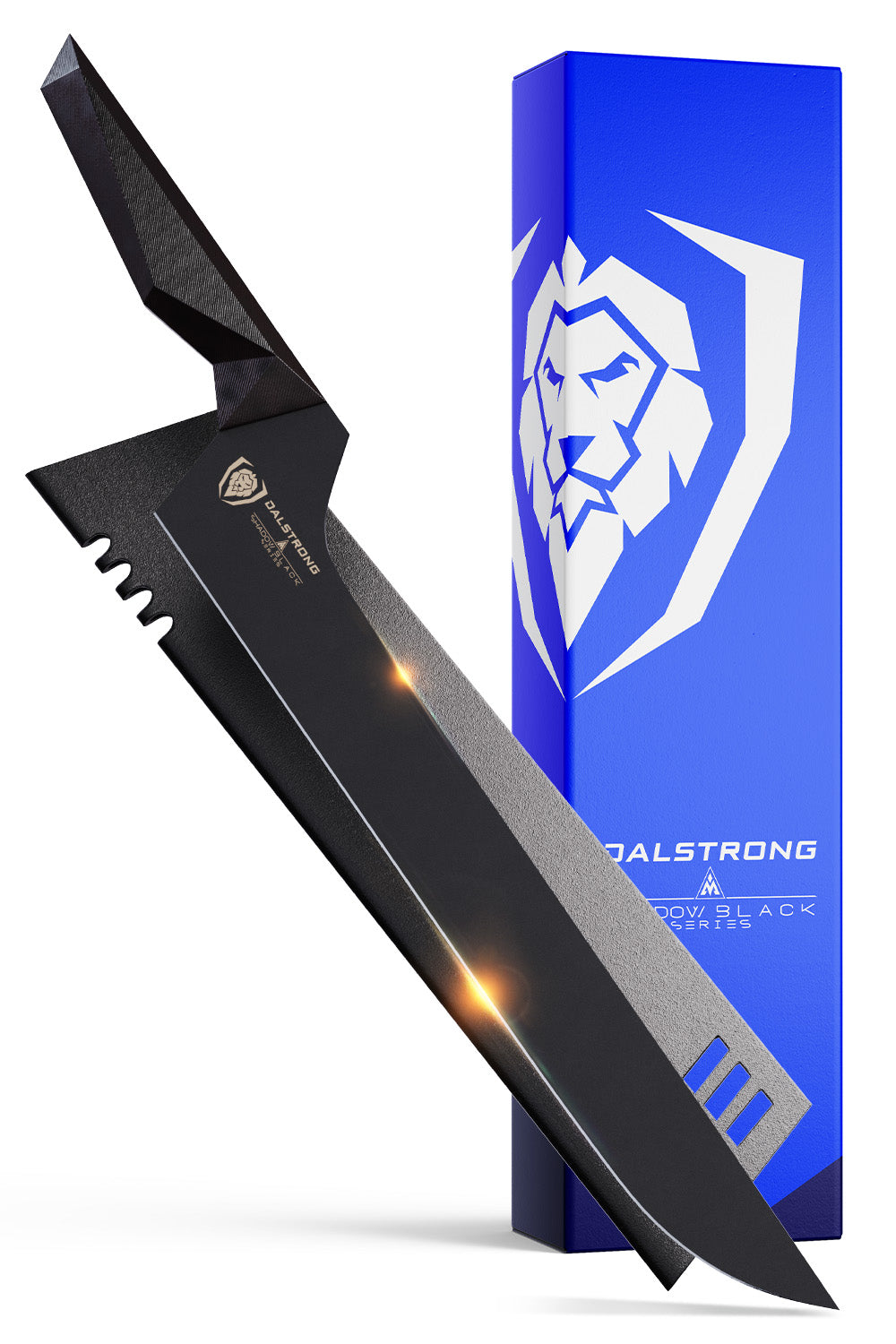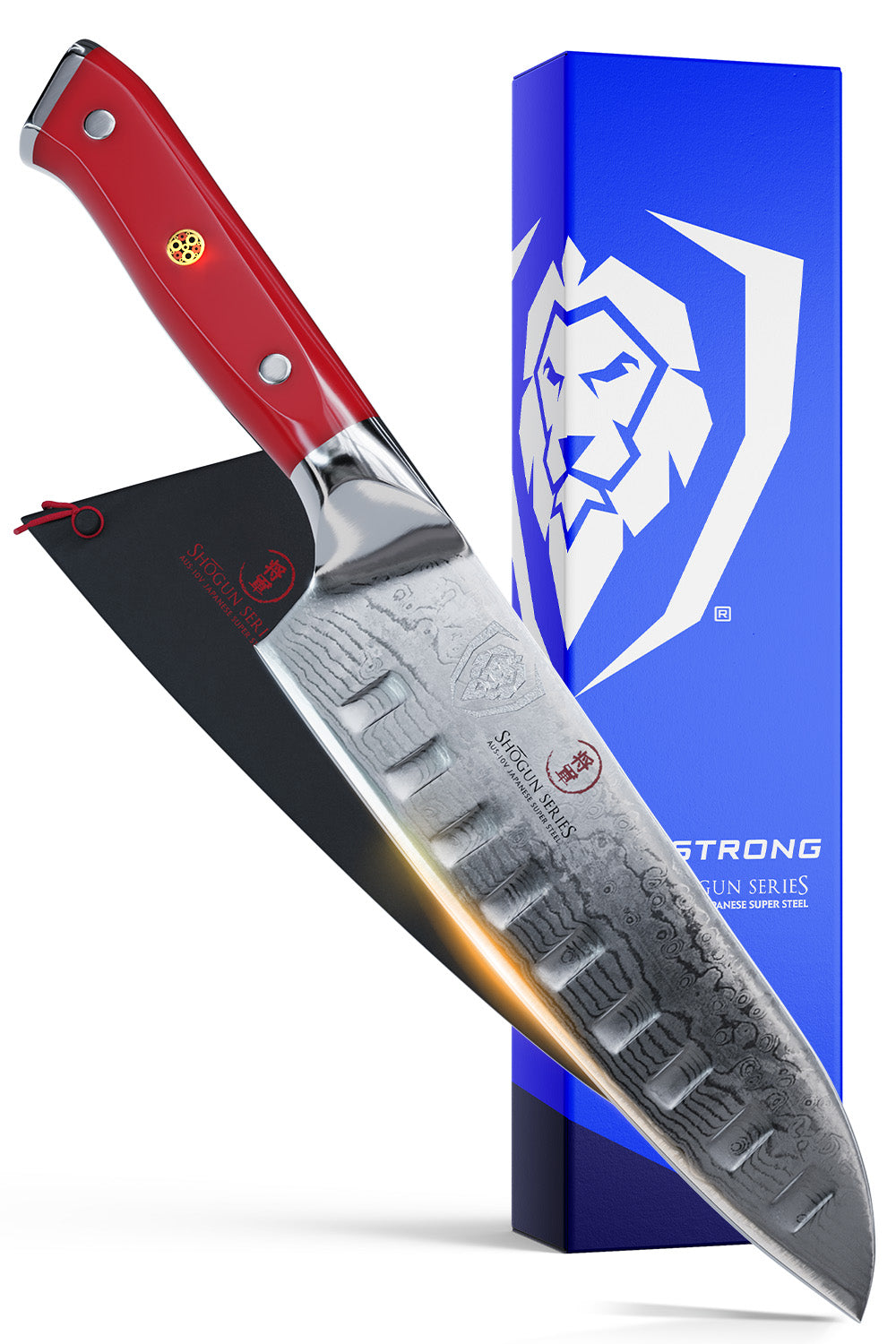 Rocker Knife 7" | Shogun Series Elite | Dalstrong
Rocker Knife 7" | Shogun Series Elite | Dalstrong
Picture this: juicy, succulent chicken cooked to delicate flawlessness. Understanding the perfect chicken temp isn't close to doneness; it's almost guaranteeing a culinary encounter that's both safe and absolutely delicious. So, let's dig into the science and secret insights behind accomplishing that perfect temp for chicken that'll take off taste buds dancing and tummies content!
1. The Ideal Chicken Temp
 Curved Boning Knife 6" | Shadow Black Series | NSF Certified | Dalstrong
Curved Boning Knife 6" | Shadow Black Series | NSF Certified | Dalstrong
The ideal temperature to cook chicken is 165°F (73.9°C). Cooking chicken to this temperature ensures that it's safe to eat and eliminates any harmful bacteria.
To measure the temperature accurately, use a food thermometer inserted into the thickest part of the chicken, avoiding bone. Instant-read thermometers are handy for quick checks, while leave-in thermometers can monitor temperature changes while the chicken cooks. It's crucial to ensure proper cooking temperatures to avoid foodborne illnesses while still keeping the chicken moist and flavorful.
2. What Happens When Chicken Is Undercooked?
 Straight Boning Knife 6" | Shadow Black Series | NSF Certified | Dalstrong
Straight Boning Knife 6" | Shadow Black Series | NSF Certified | Dalstrong
When chicken is undercooked, it can pose serious health risks. Microbes like salmonella and campylobacter might still be displayed, leading to food poisoning. Indications incorporate stomach issues, nausea, vomiting, and fever. It's significant to make sure that the chicken achieves the prescribed inner temperature to kill off these destructive microscopic organisms and harmful bacteria to keep yourself and others safe from foodborne illnesses.
3. Chicken Safe Temperature Guide
 Curved Boning Knife 6" | Firestorm Alpha Series | Dalstrong
Curved Boning Knife 6" | Firestorm Alpha Series | Dalstrong
When it comes to cooking chicken, ensuring it reaches the right temperature is essential for both safety and taste. The Chicken Safe Temperature guide below is reliable and offers recommended precise internal temperatures for various chicken cuts.
Here's a quick guide for safe chicken temperatures:
Whole Chicken
Cook until the internal temperature reaches 165°F (73.9°C) at the thickest part without touching bone. Once the chicken reaches the desired temperature, remove it from the heat source and let it rest for a few minutes. This allows the residual heat to distribute evenly, ensuring the chicken is safe to consume while keeping it juicy and flavorful.
Chicken Breasts
Aim for 165°F (73.9°C) throughout. Use an instant-read thermometer or a leave-in probe thermometer and insert it into the thickest part of the chicken breast, avoiding bone and ensuring it reaches the center.
Chicken Thighs, Wings, Legs
Same as breasts, 165°F (73.9°C) at the thickest part. Always remember that different parts of the chicken may cook at different rates. Monitoring each piece individually will help ensure they're all safely and thoroughly cooked.
Ground Chicken
Cook to an internal temperature of 165°F (73.9°C). Ground chicken, like other ground meats, tends to cook unevenly due to its texture, so ensuring the entire batch reaches the recommended temperature is crucial for safety.
Use a reliable meat thermometer to ensure you hit these temperatures and enjoy your chicken safely!
4. Easy Chicken Recipe
One easy and delicious chicken recipe is Chicken Gyros:
Ingredients
- 1.5 lbs (700g) boneless, skinless chicken thighs, sliced thinly
- 3 cloves garlic, minced
- 3 tablespoons olive oil
- 1 tablespoon lemon juice
- 1 tablespoon red wine vinegar
- 2 teaspoons smoked paprika
- 2 teaspoons dried oregano
- 1 teaspoon cumin
- Salt and pepper to taste
- 1 cup Greek yogurt
- 1 cucumber, grated and squeezed to remove excess moisture
- 2 cloves garlic, minced
- 1 tablespoon lemon juice
- 1 tablespoon chopped fresh dill (or 1 teaspoon dried dill)
- Salt and pepper to taste
Instructions
Chicken Marinade
- In a bowl, mix together the olive oil, lemon juice, red wine vinegar, minced garlic, smoked paprika, oregano, cumin, salt, and pepper.
- Add the thinly sliced chicken thighs to the marinade, coating the chicken evenly. Cover the bowl and refrigerate for at least 1 hour, or ideally, overnight for the best flavor.
Tzatziki Sauce
- Combine the Greek yogurt, grated cucumber, minced garlic, lemon juice, dill, salt, and pepper in a bowl. Mix well and refrigerate until ready to serve.
Cooking the Chicken
- Heat a skillet or grill pan over medium-high heat.
- Cook the marinated chicken in batches for about 5-6 minutes per side or until fully cooked and slightly charred. Ensure the chicken reaches an internal temperature of 165°F (74°C).
- Once cooked, remove the chicken from the heat and let it rest for a few minutes.
Assembling the Gyros
- Warm the pita bread or flatbread.
- Place some sliced tomatoes, red onions, lettuce, or cucumber (if using) on the bread.
- Add a generous portion of the cooked chicken on top of the veggies.
- Drizzle tzatziki sauce over the chicken.
- Optionally, sprinkle some crumbled feta cheese on top.
- Fold or roll the bread around the filling, securing it with parchment paper or foil if needed.
Enjoy your homemade chicken gyros! They're perfect for a flavorful and satisfying meal.
5. Dalstrong Tools You’ll Need
1. Boning Knife 6" | Shogun Series ELITE | Dalstrong
The 6" Boning Knife from the Shogun Series ELITE by Dalstrong is a precision tool designed for effortless deboning and precise meat trimming. Crafted with high-quality materials and expert craftsmanship, this knife is deal for deboning poultry, meats, and filleting fish with precision and ease.
PROS:
- The 6" blade is meticulously crafted for intricate cuts and offers excellent maneuverability.
- Made from high-carbon Japanese AUS-10V steel, it delivers exceptional sharpness and edge retention.
- The knife boasts a robust and resilient design, ensuring long-lasting performance.
CONS:
- While the 6" size offers agility, it might be too short for larger cuts or tasks requiring more blade length.
2. Curved Boning Knife 6" | Firestorm Alpha Series | Dalstrong
The 6" Curved Boning Knife from the Firestorm Alpha Series by Dalstrong is a specialized tool tailored for precise boning and trimming tasks. Crafted from 6” of precision forged 10CR15MOV High-Carbon Steel in 67 layers, ensuring durability, sharpness, and resistance to corrosion.
PROS:
- The curved design enhances control and facilitates smooth, precise cuts, especially around bones and joints.
- The ergonomic handle offers a comfortable grip, reducing hand fatigue during extended use.
- Ideal for deboning meats, poultry, and filleting fish, providing optimal control and maneuverability.
CONS:
- The curved design might be less versatile for tasks requiring a straight blade.
3. Kiritsuke Chef's Knife 9.5" | Phantom Series | Dalstrong
The 9.5" Kiritsuke Chef's Knife from the Phantom Series by Dalstrong is a versatile and elegant kitchen tool designed for precision and multi-purpose use. The Kiritsuke blade combines elements of a chef's knife and a slicer, allowing it to perform various tasks, from slicing and dicing to intricate cuts.
PROS:
- Crafted from 9.5” precision forged blade with premium Japanese AUS-8 at 58 HRC, ensuring unparalled sharpness, durability, and resistance to stains and corrosion.
- The knife features an aesthetically pleasing design, featuring a unique pattern and a visually striking appearance.
- Suitable for professionals and home cooks alike, capable of handling a wide range of kitchen tasks efficiently.
CONS:
- The Kiritsuke blade shape might require some adjustment for those accustomed to traditional chef's knives.
4. Corner Cutting Board | Natural Teak Wood | Dalstrong
The Corner Cutting Board by Dalstrong, crafted from natural Teak wood, offers a unique design for efficient food preparation.
PROS:
- Its unique corner shape is ideal for placing it right at the corner of countertops, saving space and allowing easy access.
- Made from Teak wood, known for its durability and resistance to moisture, ensuring long-lasting use.
- Teak wood is gentle on knife blades, helping maintain their sharpness for longer periods.
- Offers ample cutting space while being compact enough to fit into smaller kitchens.
- The natural grain and finish of Teak wood provide an attractive and stylish addition to kitchen decor.
CONS:
- Its corner design might restrict movement for larger or more intricate cutting tasks.
5. Butcher & Breaking Knife 8" | Shogun Series ELITE | Dalstrong
The 8" Butcher & Breaking Knife from Dalstrong's Shogun Series ELITE is a robust tool designed for heavy-duty meat cutting and breaking tasks. The ergonomic G-10 handle provides a nice secure grip and its blade offers outstanding sharpness and edge retention, ensuring consistent performance.
PROS:
- Crafted from high-carbon Japanese AUS-10V steel, providing exceptional strength and durability.
- The 8" blade excels in breaking down large cuts of meat with precision and efficiency, making it ideal for butchering tasks.
- Comes with a protective sheath for safety and protection of the blade and user.
CONS:
- The knife's size and weight might not be ideal for users seeking a more lightweight or versatile option.
6. Frequently Asked Questions
Is chicken done at 165 or 180?
Chicken is considered safe at 165°F according to food safety standards. However, sous vide cooking often uses lower temp for chicken longer durations to ensure safety. For a perfect balance between food safety and taste, cook chicken thighs and breast meat and marinating chicken at medium heat until they reach 165°F, delivering both safety and succulence in every bite.
Is chicken safe at 70c?
Chicken is cooked sous vide at 70°C is considered safe to eat, ensuring thorough chicken cooking. However, for home cooks, particularly with boneless skinless chicken breast meat, adhering to the recommended temperature of 165°F (73.9°C) guarantees optimal safety. Incorporate marination techniques and adjust chicken cooking times accordingly, prioritizing both safety and flavor in your chicken dishes.
What temperature in Celsius is chicken done?
Chicken is cooked to a safe temperature at 73.9°C (165°F), crucial for averting food poisoning risks. Both bone-in and boneless marinating chicken must reach this temperature, monitored using a meat thermometer. Employing sous vide or conventional chicken cooking methods with medium heat ensures safety, providing accurate chicken cooking times and preserving juiciness while guaranteeing chicken's safe consumption.
Is chicken done at 160 or 165?
Chicken is cooked and safe to eat at 165°F (73.9°C), a standard temperature for doneness. Whether using sous vide or other chicken cooking methods, achieving this internal temperature is crucial for safe consumption, especially for bone-in chicken. Adhering to this temp for chicken guideline ensures thorough cooking, reducing risks associated with undercooked poultry and guaranteeing safe, delicious meals.














